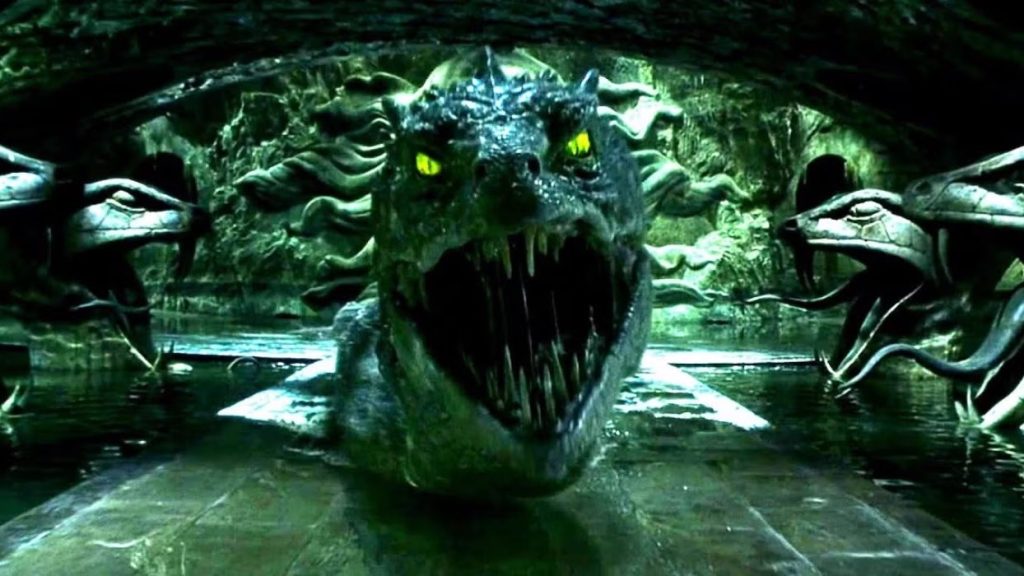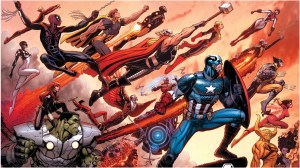The Wizarding World is a lot bigger, and a lot more dangerous, than one may think. Harry, Ron, and Hermione encountered their fair share of beasts during their time at Hogwarts and beyond, starting at the tender age of 11 when they came across Fluffy, the three-headed dog. From there, the Fantastic Beasts and Where to Find Them film series only introduced us to more frightening, imposing creatures of all shapes and sizes. While Rubeus Hagrid may have cautioned his students from profiling certain magical beasts, and Newt Scamander made handling them look deceptively easy, many of the creatures that inhabit the Wizarding World are downright terrifying.
Videos by ComicBook.com
We’ve rounded up the top four most dangerous species below.
4) The Basilisk

Introduced in Harry Potter and the Chamber of Secrets, the Basilisk terrorized Hogwarts when Lord Voldemort unleashed the massive serpent via his diary Horcrux and a possessed Ginny Weasley. Why such a deadly monster was permitted to lurk beneath the school, we’ll never know, especially since we learn in The Chamber of Secrets that the Basilisk had escaped and killed a student back in the 1940s.
As if the Basilisk’s gargantuan size and imposing maw full of venomous fangs didn’t make it dangerous enough, the snake also possesses the ability to kill its victim with a single instance of eye contact and petrify those who gaze upon it indirectly. Perhaps most chilling, though, is the fact that the Basilisk can and has been used as a weapon. Tom Riddle — both when he was alive and his Horcrux — used parseltongue to control the beast and targeted muggle-born students with its deadly glare.
3) Werewolves

Werewolves were first formally introduced by Harry’s third-year Defense Against the Dark Arts professor Remus Lupin in Harry Potter and the Prisoner of Azkaban. In author J.K. Rowling’s interpretation of the mythical beast, a person infected with lycanthropy can’t control when they shift into their lycan form during a full moon. Even more tragically, though they can recall everything that transpires while they are werewolves, they become incredibly, uncharacteristically aggressive, lest they drink Wolfsbane Potion that allows them to retain their human mind during the shift.
Although Remus Lupin quite thoroughly demonstrated to Harry and his friends that people with lycanthropy had the power to be innately good, not all werewolves have Lupin’s moral soundness. Case in point, the werewolf Fenrir Greyback, who made it his mission to infect as many people as possible with lycanthropy, and specifically preyed on children in order to build and indoctrinate his own race of wizard-hating werewolves.
Formally introduced in Harry Potter and the Half-Blood Prince, Greyback aligned himself with Lord Voldemort in exchange for power and prey. Werewolves like Greyback are particularly dangerous because their actions and destruction are intentional, unlike other beasts with less developed brains who act on mere animal instinct.
2) Lethifold

Ever wish Dementors were scarier? Neither do we. However, the infamous wraiths have an even creepier cousin in the Wizarding World: the Lethifold. Detailed in the Fantastic Beasts and Where to Find Them book, the creature is also known as the Living Shroud. A Lethifold resembles a black cloak about a half an inch thick that seemingly silently glides along surfaces to feed.
Unlike Dementors, who suck a human’s soul from their body, when a Lethifold attacks, it suffocates and then fully digests a person’s body. The only known defense against a Lethifold is the Patronus Charm, however, given that the beast tends to attack at night, when it can best blend into its surroundings and its human targets are most likely sleeping, its victim may not even have a chance to fight back. Our only consolation is that Lethifold is a rare species that is native to the tropics and hasn’t been encountered outside of the region.
1) Nundu

We only briefly glimpse a Nundu in the Fantastic Beasts and Where to Find Them film, and perhaps that’s for the best. Newt Scamander has a Nundu in his case, and though it appears to be tame, the beast is largely regarded to be the most dangerous magical creature in the Wizarding World. Resembling a leopard with a large, spiked, and inflatable throat, the breath of a Nundu is so toxic and disease-ridden that it can wipe out an entire village of people in a single exhale.
Like the Lethifold, the Nundu is said to move silently, meaning that its victims wouldn’t just be many, but they also wouldn’t have much time or ability to defend themselves. While in Harry Potter and the Goblet of Fire, Rowling specifies that it took the work of ten wizards to overpower the dragons used for the Triwizard Tournament, it apparently takes no less than a hundred wizards to subdue a Nundu. The fact that it can cause so much destruction and takes so many people to curtail is why the fearsome Nundu tops our list of the most dangerous species.
Which beast do you think is most dangerous in the Harry Potter franchise? Let us know in the comments!









